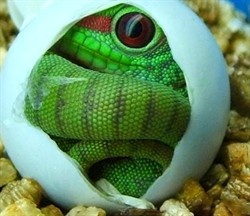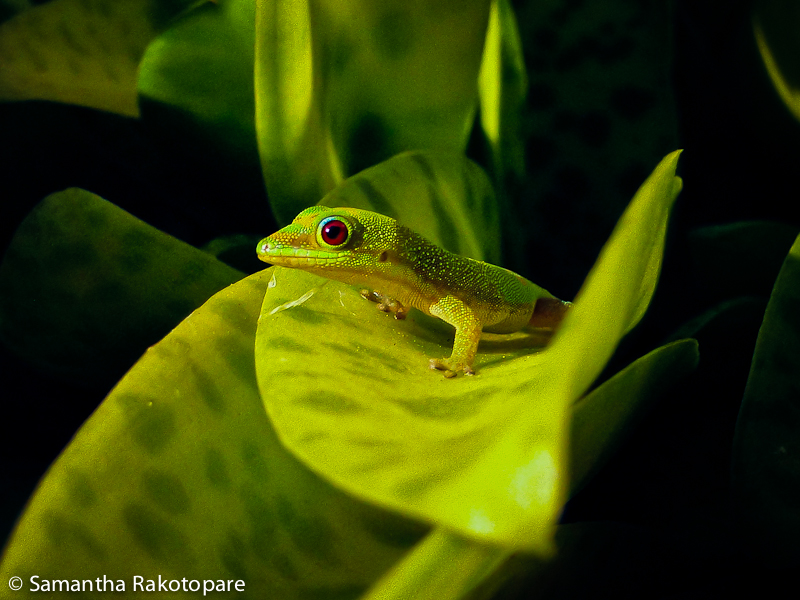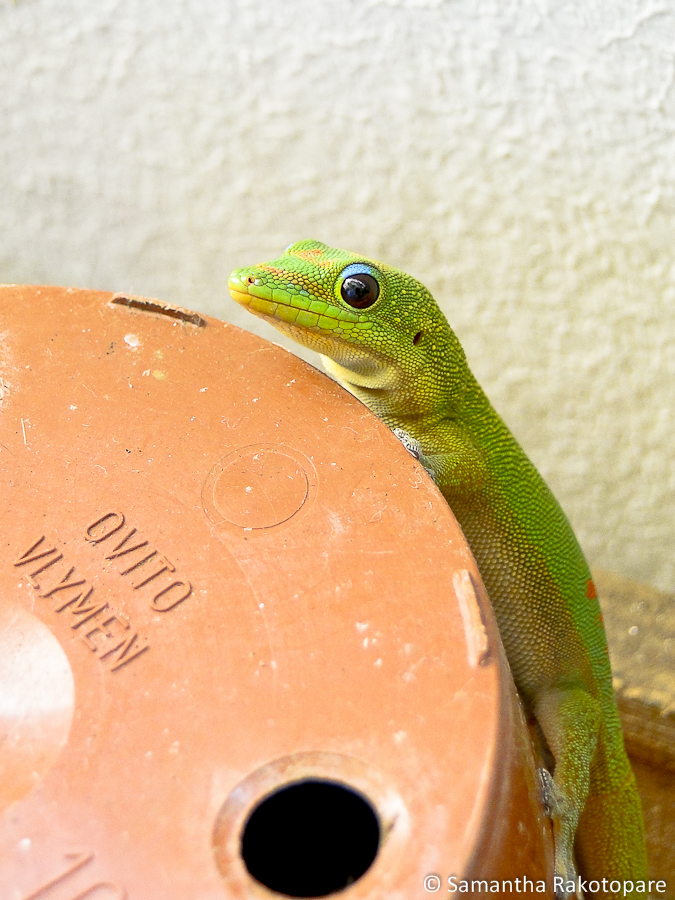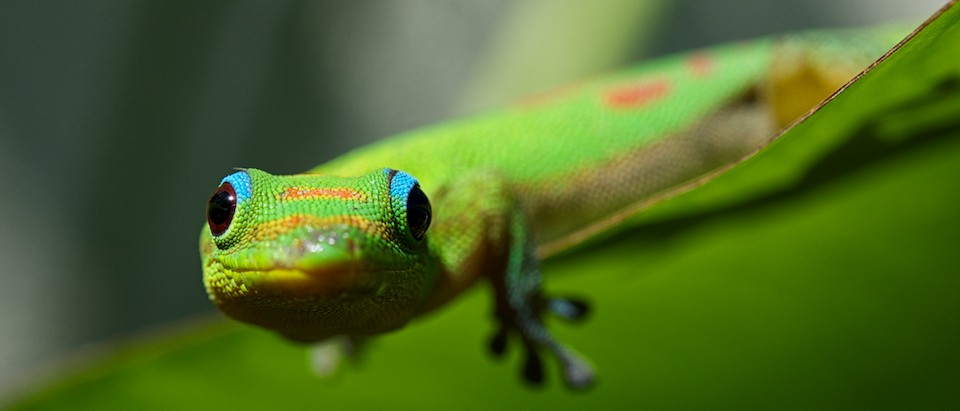Reproduction
There are twenty-nine extant Phelsuma lizards with twenty-five
of them currently found in Madagascar, making them one of the
most commonly found
 genus of lizards in this area. Madagascar is
the original
founding location of the Phelsuma laticauda,
although they
are also found in coastal regions of Africa, and
were later
transported to the Hawaiian Islands. Phelsuma
laticauda
clings to coastal regions and lives solely in tropical
regions. (Rocha, S., Vences, M., Glaw, F., Posada, D., and D.J.
Harris,
2009) Phelsuma laticauda was not native to Hawaii, in
1974
eight lizards were transported to Hawaii on the island of
Oahu and alsoto the territory of the Honolulu Zoo. Through
just
these few lizards they have now established themselves on most
of the Hawaiian Islands. (Photo right: courtesy of
Joe Farah). Today they are currently debating if
this species could become invasive to this area (Goldberg,
S.R., and F. Kraus, 2011).
genus of lizards in this area. Madagascar is
the original
founding location of the Phelsuma laticauda,
although they
are also found in coastal regions of Africa, and
were later
transported to the Hawaiian Islands. Phelsuma
laticauda
clings to coastal regions and lives solely in tropical
regions. (Rocha, S., Vences, M., Glaw, F., Posada, D., and D.J.
Harris,
2009) Phelsuma laticauda was not native to Hawaii, in
1974
eight lizards were transported to Hawaii on the island of
Oahu and alsoto the territory of the Honolulu Zoo. Through
just
these few lizards they have now established themselves on most
of the Hawaiian Islands. (Photo right: courtesy of
Joe Farah). Today they are currently debating if
this species could become invasive to this area (Goldberg,
S.R., and F. Kraus, 2011).
 Studies of reproduction of the Phelsuma laticauda have been done
on a population found in Hawaii, due to the abundance of P.
laticauda found in this area. Phelsuma laticauda reproduces
sexually, with the female laying eggs and the male fertilizing
them. They are able to reproduce when they are fully mature
which occurs 9-12 months after they hatch. They are measured
from the tip of their snout to the
posterior area of vent;
snout-vent length (SVL) and they are measured in millimeters.
The average size for an adult male is SVL=54.8 mm with the
average female size being SVL= 50.6 mm (Goldberg, S.R., and F.
Kraus, 2011).
Studies of reproduction of the Phelsuma laticauda have been done
on a population found in Hawaii, due to the abundance of P.
laticauda found in this area. Phelsuma laticauda reproduces
sexually, with the female laying eggs and the male fertilizing
them. They are able to reproduce when they are fully mature
which occurs 9-12 months after they hatch. They are measured
from the tip of their snout to the
posterior area of vent;
snout-vent length (SVL) and they are measured in millimeters.
The average size for an adult male is SVL=54.8 mm with the
average female size being SVL= 50.6 mm (Goldberg, S.R., and F.
Kraus, 2011).

For a study done on 88 P. laticauda found in four different
museums in Hawaii, they removed the left gonad from each male
lizard and placed it in paraffin. After being placed in the
paraffin it was then sliced, stained, and viewed under a
microscope. Based off of Goldberg’s study January and August are
the most fertile times for female P. laticauda they have the
highest number of oviduct eggs, early yolk deposition, and
enlarged follicles. The hatchlings are usually born at 38-42mm
SVL. Female lizards typically mate again shortly after laying
their previous eggs and this happens two times a year which
displays their high fecundity (Goldberg, S.R., and F. Kraus,
2011).
Photos courtesy of
Samantha Rakotopare.
